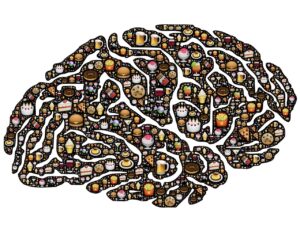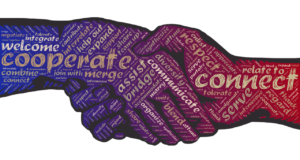Written by Oliver J. Morgan, Foreward by Louis Cozolino
Reviewed by Nancy Eichhorn
“Addiction is a unique threat to the relationships that anchor our lives. Addiction isolates us, turning us inward and hardening our hearts to one another” (pg. 210-211).
 Hi, my name is Nancy and I’m an addict. I have lived with disordered eating, excessive exercise, compulsive cleaning and overindulgence. The substance wasn’t the issue. The reason was. And even after therapy, 12-step programs and self-reflective/meditation training, part of me clung to tiny slivers of self-sabotage. I wanted to end the pattern yet kept myself locked in. Was it laziness? Lack of willpower? Resistance? Why, I asked myself, why?
Hi, my name is Nancy and I’m an addict. I have lived with disordered eating, excessive exercise, compulsive cleaning and overindulgence. The substance wasn’t the issue. The reason was. And even after therapy, 12-step programs and self-reflective/meditation training, part of me clung to tiny slivers of self-sabotage. I wanted to end the pattern yet kept myself locked in. Was it laziness? Lack of willpower? Resistance? Why, I asked myself, why?
Oliver J. Morgan may have some answers. In his recently published book, Addiction, Attachment, Trauma and Recovery: The Power of Connection, Morgan offers a new framework for clinicians working with clients like myself that combines interpersonal neurobiology and social ecology and focuses on addiction and recovery from an attachment-sensitive counseling approach. The soul of addiction, Morgan says, is a lack of connection and belonging. “Recovery,” he writes, ”is a restoration to connection, to meaningful and life-giving relationships” (pg. xxix).
The traditional models of addiction—it’s a disease, a choice, a learned behavior—are being replaced by models focused on relational ecologies. Using case studies and personal life events, Morgan presents “a model, a method, and a mandate. . . connection and social ecology are the core of his model of healthy development” (xxxi). The method is reconnection.
 “Intervention, treatment and recovery in attachment-sensitive work must focus on root causes if we are to achieve enduring outcomes . . . Addicted persons need communion, reconnection, belonging and purpose for sustainable recovery” (pp.xxxii).
“Intervention, treatment and recovery in attachment-sensitive work must focus on root causes if we are to achieve enduring outcomes . . . Addicted persons need communion, reconnection, belonging and purpose for sustainable recovery” (pp.xxxii).
A General Overview
Chapters 1 and 2 focus on a client named Joe. Childhood adversities and developmental trauma initiated his lifelong search for connection. Morgan explores the neurobiological, psychological and social impacts associated with adversity and attachment ruptures. Chapters 3 and 4 cover basic facts and myths associated with addiction. Chapter 5 gives readers a fundamental background in attachment theory and its role in human development and addiction. Chapters 6 and 7 discuss stress, adversity, and trauma and their role in addiction, including the ACES study and its findings regarding addiction. Chapter 8 offers Morgan’s model for addiction recovery: Recovery Ecologies: The Road to (Re)Connection. Here he opens the conversation to explore his meaning and focus for recovery-oriented care to be fully functional. He notes that “attachment-sensitive counseling with addictive and trauma-spectrum disorders can’t remain isolated to therapy sessions. Rather, they must be fully relational, the therapeutic alliance opens into recovery-oriented systems and relational ecologies available” (pg. 186). Chapter 9 delves into social ecology and poverty of spirit. Chapter 10 ends the text with Morgan’s vision of a new society built on the principles offered in his book.
“Addiction is a multi-determined phenomenon with layers within layers of mutual influences, internal and external, all interacting concurrently, leading to a pathological outcome” (pg. 4).
According to Morgan, sustainable long-term recovery relies on mending broken connections and forging new ones. Therapists, he writes, need to establish a felt sense of safety and security when working with traumatized and addicted clients. Morgan shares a five-point framework (awareness, space, dialog, negotiate, and invite) to deal with our “inner critics” (the voices that shame and blame us, that lead to anxiety, depression, and substance use and relapse). Citing Stephen Porges, “Connectedness is a biological imperative”, Morgan explores the connection between attachment ruptures and the lack of attuned caregivers. Feeling met, feeling felt, feeling with another person is essential for healthy development—”physical nearness must be coupled with emotional closeness and interaction” (pg. 105). We learn how to self-regulate our feeling states through co-regulation with attuned and attached caregivers—it fuels the formation of our identity and our core self. Through connection, we survive and learn to thrive on our own. “Faulty attachment experiences may alter/create faulty writing and system vulnerabilities that lead to problems” (pg. 100). “Addiction does result for broken attachment bonds” (pg. 106). Frayed and broken connections, trauma, and social discord and disconnection often lead to illness and addiction. Reconnection and community appear to be the saving grace.
“Addiction is not just about demon drugs, brain chemicals and faulty neurons. Addiction is also about adaptive solutions and attempts to cope with adversity, trauma and toxic stress” (pg. 209).
Writing about stress and its impact on our lives and addictions, Morgan notes that toxic stress isn’t always linked with specific events but rather can result from patterns of adversity and relationship failure. “Stress, adversity and trauma leave footprints on our psyche” (pg. 155).
Recovery Management
Morgan notes that recovery is more than abstinence. Recovery is multi-dimensional in that it encompasses health, well-being, quality of life, and social engagement (pg. 191). I appreciated his conversation about harmful use versus addiction and that abstinence for mild to moderate substance related disorders might be off-putting. Misuse may have started as an adaptive solution that advanced to harmful use and perhaps addiction. Once ingrained as a substitute for human connection and healthy relationships, it takes on a life of its own. All treatment per Morgan must include assessment, psychoeducation, and treatment of family dynamics (pg. 199).
You cannot treat an addict in isolation.
There’s always more to write, more to share. I offer my review as an introduction to a new perspective on addiction and treatment. I hear stories about people finding sobriety and then relapsing, again and again; the cyclical nature comes as no surprise. I know my own struggles trusting relationships as a shelter from my personal storms—I’m a rock, I am an island was my theme song for many years. I read Morgan’s book with interest and learned some answers to my questions. I had a sense, but his writing offered concrete comments that resonated with my thought process. Lacking an attuned attachment figure who was able to both self-and co-regulate started the pattern (along with other factors such as growing up in California in the 1960s where drug and alcohol use was part of the social scene). This led to my feeling that no one attuned with me, met me. I felt alone to cope with overwhelm using ways I had learned, practiced, perfected as a child and young adult. It’s one thing to replace a substance, i.e., wine, with another, i.e. chocolate frozen yogurt. Its completely another to replace a substance with a person who is offering a healthy supportive relationship and the skills to regulate the hiccups in our lives and feel a sense of being met, felt, contained, and resonate with that connection with trust and faith.
Reference
 Morgan, O. J. (2019). Addiction, attachment, trauma and recovery: The power of connection. New York: W.W. Norton & Company, Inc.
Morgan, O. J. (2019). Addiction, attachment, trauma and recovery: The power of connection. New York: W.W. Norton & Company, Inc.
Photo Credits
Brain Mind Obsession: John Hain from Pixabay
Connection Handshake: John Hain from Pixabay
Layers: analogicus from Pixabay
Psychology: Gerd Altmann from Pixabay
Isolation: Camilo Jimenez on Unsplash










